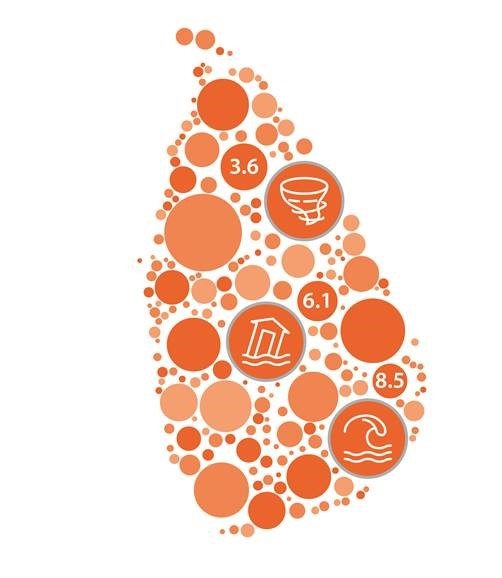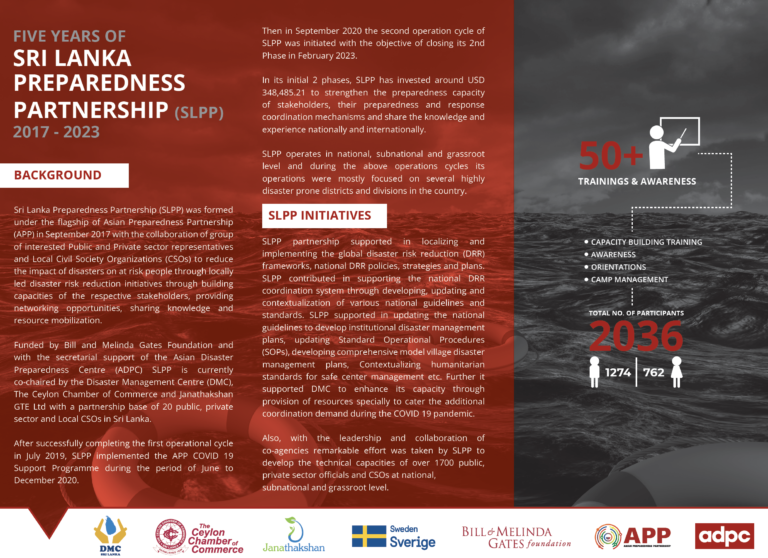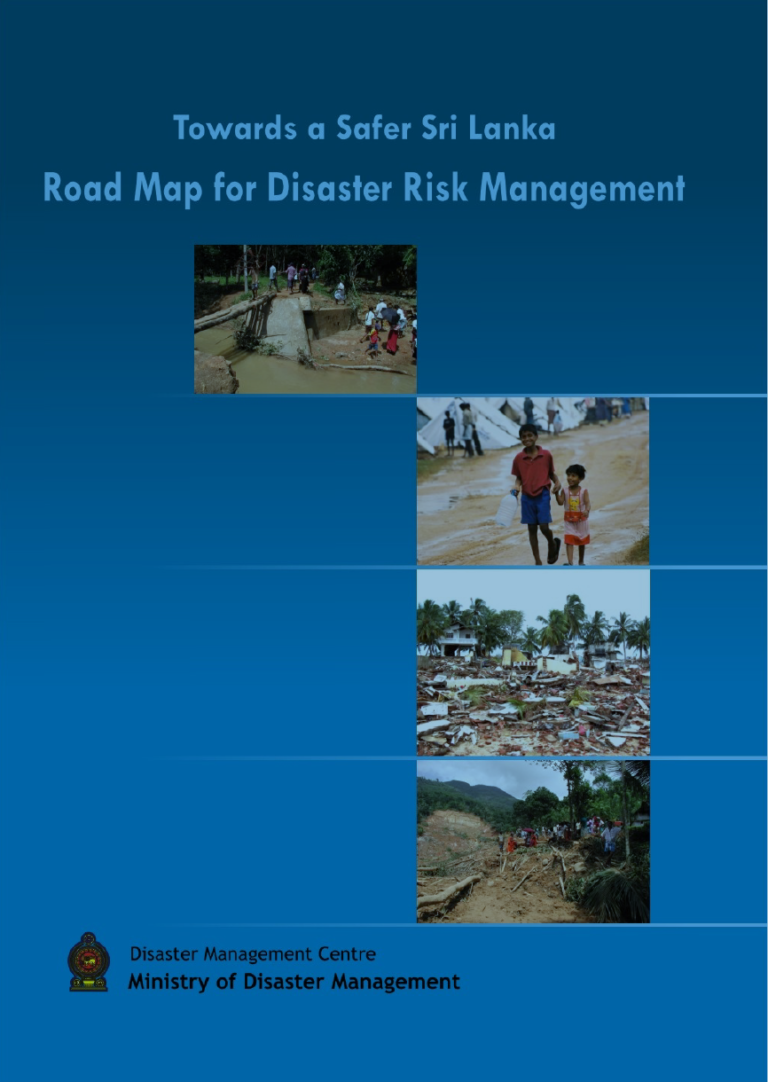
Sri Lanka is a teardrop-shaped island located in the Indian Ocean. Approximately half 21.49 million total population live along the 1,340 kilometers (km) of the country’s coastline. The population has become more vulnerable with increasing frequencies of cyclones and monsoonal rains that lead to flooding and landslides.

Sri Lanka has an overall risk index of 3.7. The country’s most common disaster events of tsunamis (8.5), floods (6.1), and tropical cyclones (3.6).












